Bembecia ichneumoniformis
([Denis & Schiffermüller], 1775)
-
 Subfamily: Sesiinae - Synanthedonini
Subfamily: Sesiinae - Synanthedonini -
 Wingspan: 12-29 mm
Wingspan: 12-29 mm -
 Flight period: Jun - Aug
Flight period: Jun - Aug -
 Spread: Uncommon
Spread: Uncommon -
 Host plants: Fabaceae
Host plants: Fabaceae
Information
The Bembecia ichneumoniformis also called The Six-Belted Clearwing is a moth of the Sesiidae family with a wingspan of 12-29 mm.
It is found in almost all of Europe, with the exception of Ireland and Iceland *.
Its range extends to Asia Minor, the Caucasus, and northern Iran
In Italy it is also present in the islands *.
The front wings of the Bembecia ichneumoniformis have, in the median area, a yellow-orange stripe that separates the transparent areas of the wing itself, the costal margin is brownish black, the anal margin is orange red. < br>
The disc area laterally has a semicircular spot of orange color with the ETA (transparent area) divided into 5 cells and circular in shape. **
The hind wings are transparent with black or orange color veins, the costa is orange up to about 2/3 of the wing.
The body of these moths is black, with six narrow yellow transverse bands in males, while females may have only five. ***
The antenna is black, sometimes with a white spot near the apex but over time it tends to clear up and turn yellow.
Hardly distinguishable from the related species Bembecia scopigera , it can be discerned from the latter for the apical area that Bembecia ichneumoniformis is orange in color,
in Bembecia scopigera is yellow-orange and lighter, not clearly separated from the transparent area (ETA)
which is wider and gradually dissolves towards the outside, without a clear boundary.
This species prefers calcareous and arid soils. Uncommon species, adults can be seen in flight from June to August.
When in flight they emit the characteristic sound of the flight of some hymenoptera.
Univoltine, unlike other sesides, completes development in one year. It winters as a pupa.
The larva is whitish, translucent, with a brown / amber head, the pupa is dark brown with brown shades, it forms inside a cocoon covered with residues. **
The larvae nurono of various Fabaceae in the stems or in the roots ****, some recorded plants are Lotus corniculatus, Ononis spinosa,
Dorycnium pentaphyllum, Dorycnium germanicum, Dorycnium herbaceum, Dorycnium hirsutum, Medicago, Hippocrepis comosa, Lupinus polyphyllus, Tetragonolobus maritimus and Lathyrus pratensis. ****
* Lepidoptera mundi https://lepidoptera.eu/ - Fauna Europea https://fauna-eu.org/
** ** Bestimmungshilfe für die in Europa nachgewiesenen Schmetterlingsarten - http://lepiforum.de/ -
*** "Six-belted Clearwing". Butterfly Conservation.
**** nic.funet.fi - http://www.nic.funet.fi/pub/sci/bio/life/insecta/ lepidoptera/ditrysia/sesioidea/sesiidae/sesiinae/bembecia/#ichneumoniformis
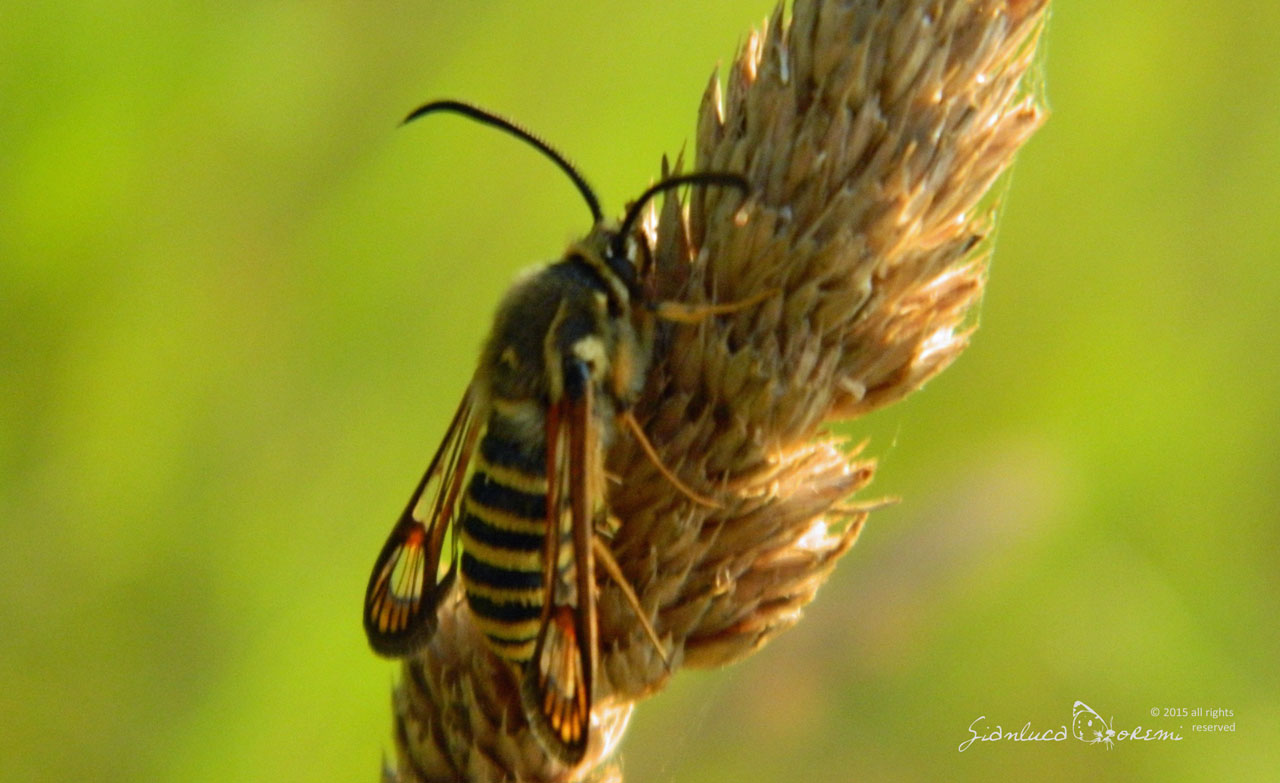



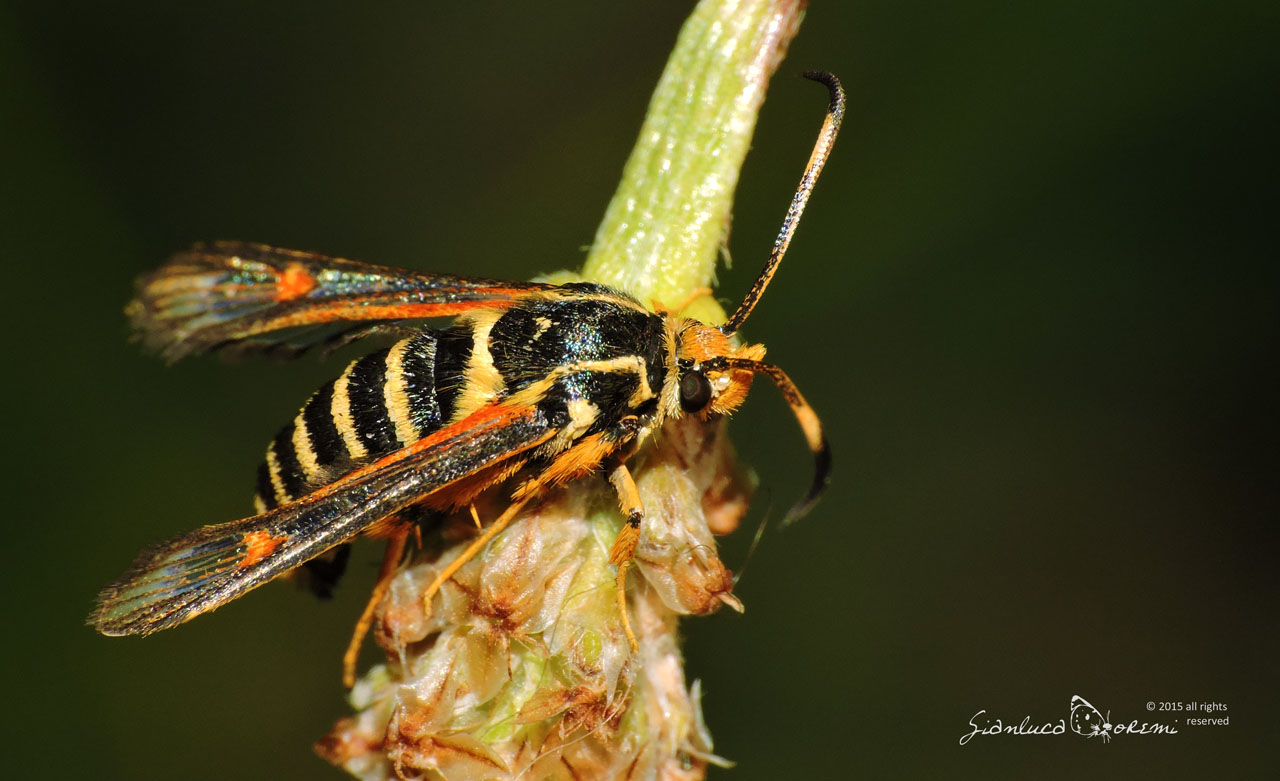
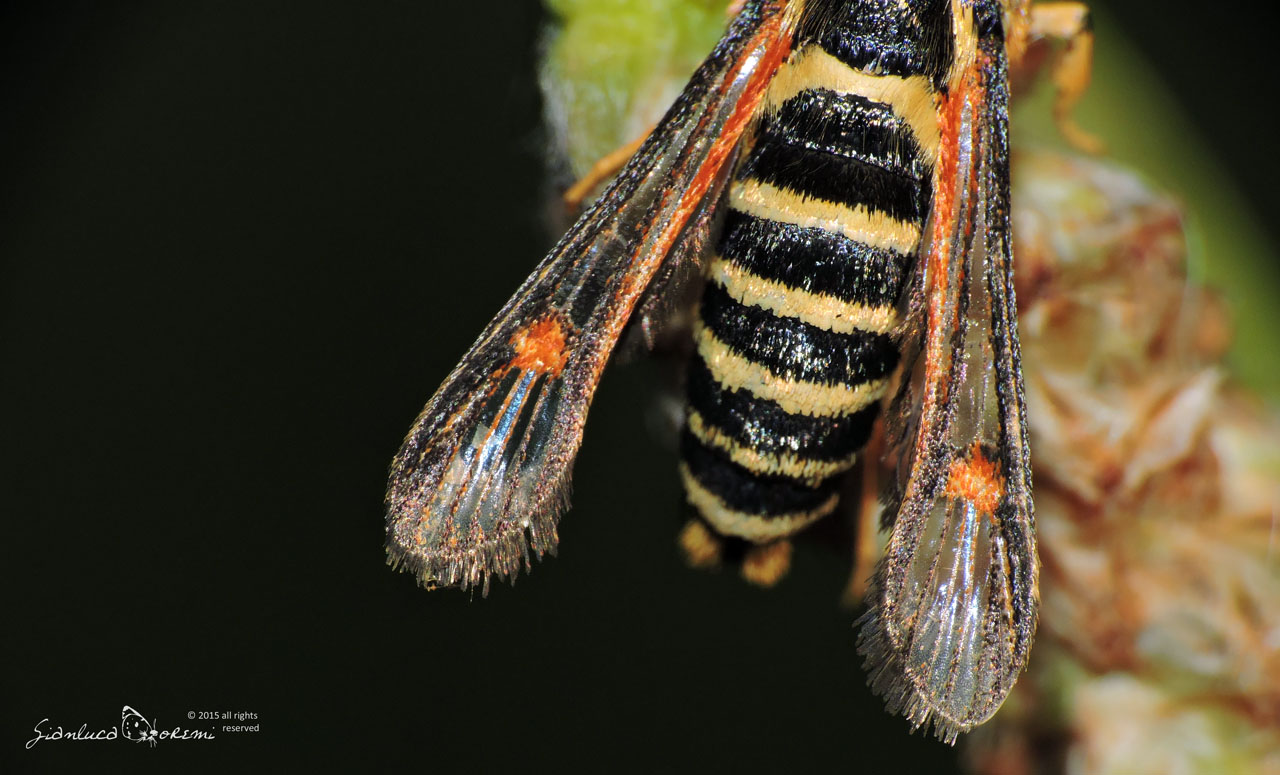
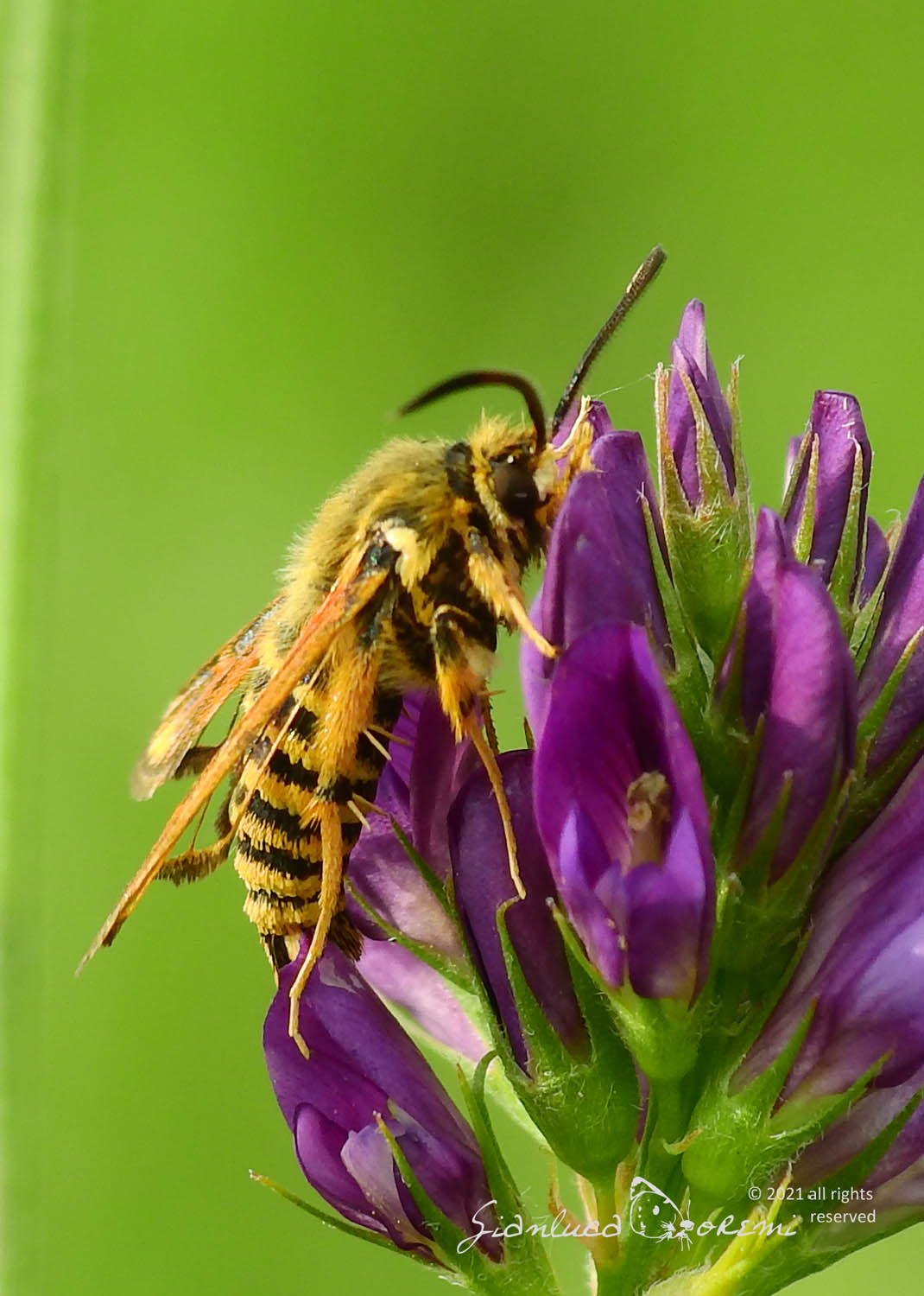
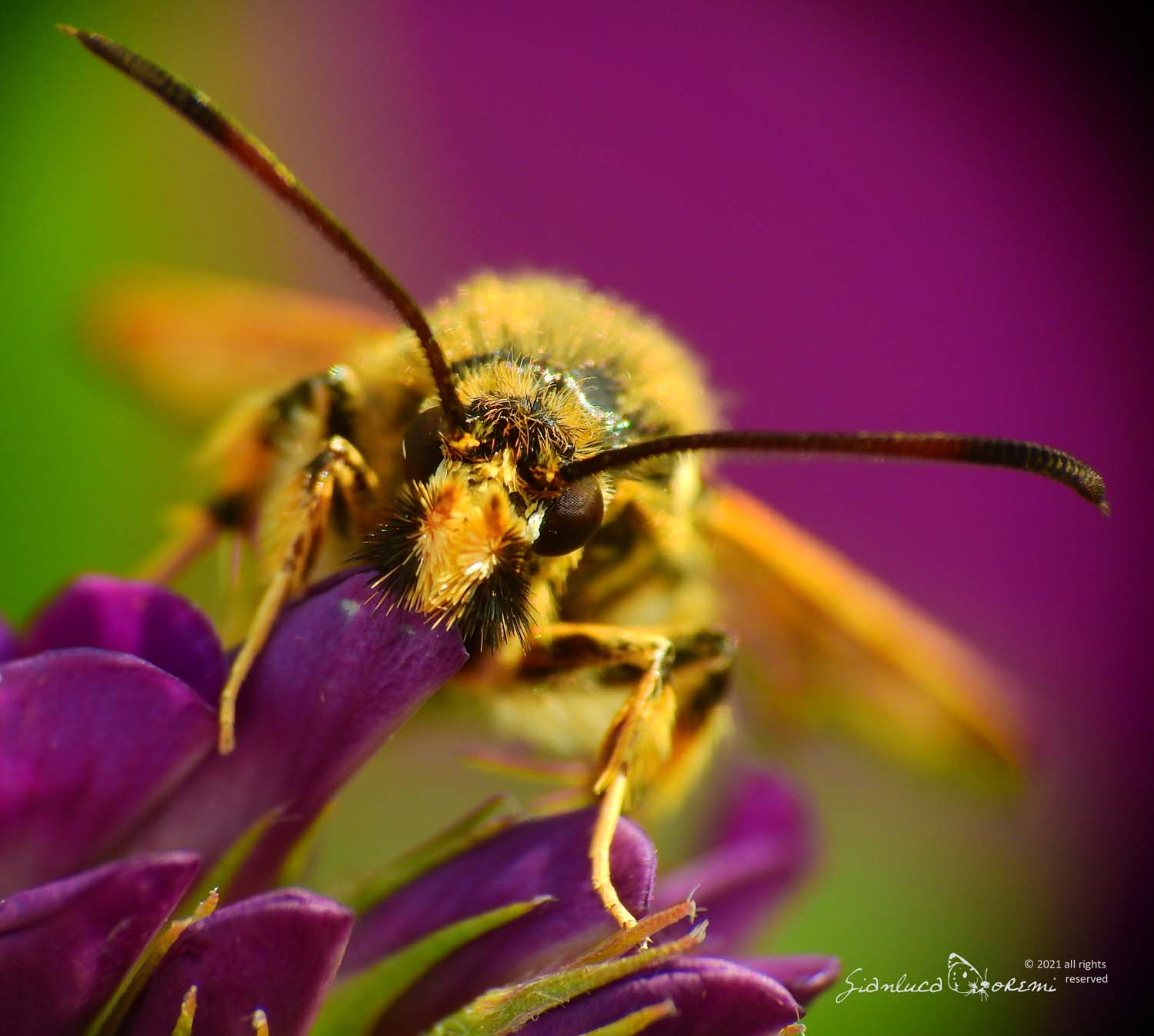



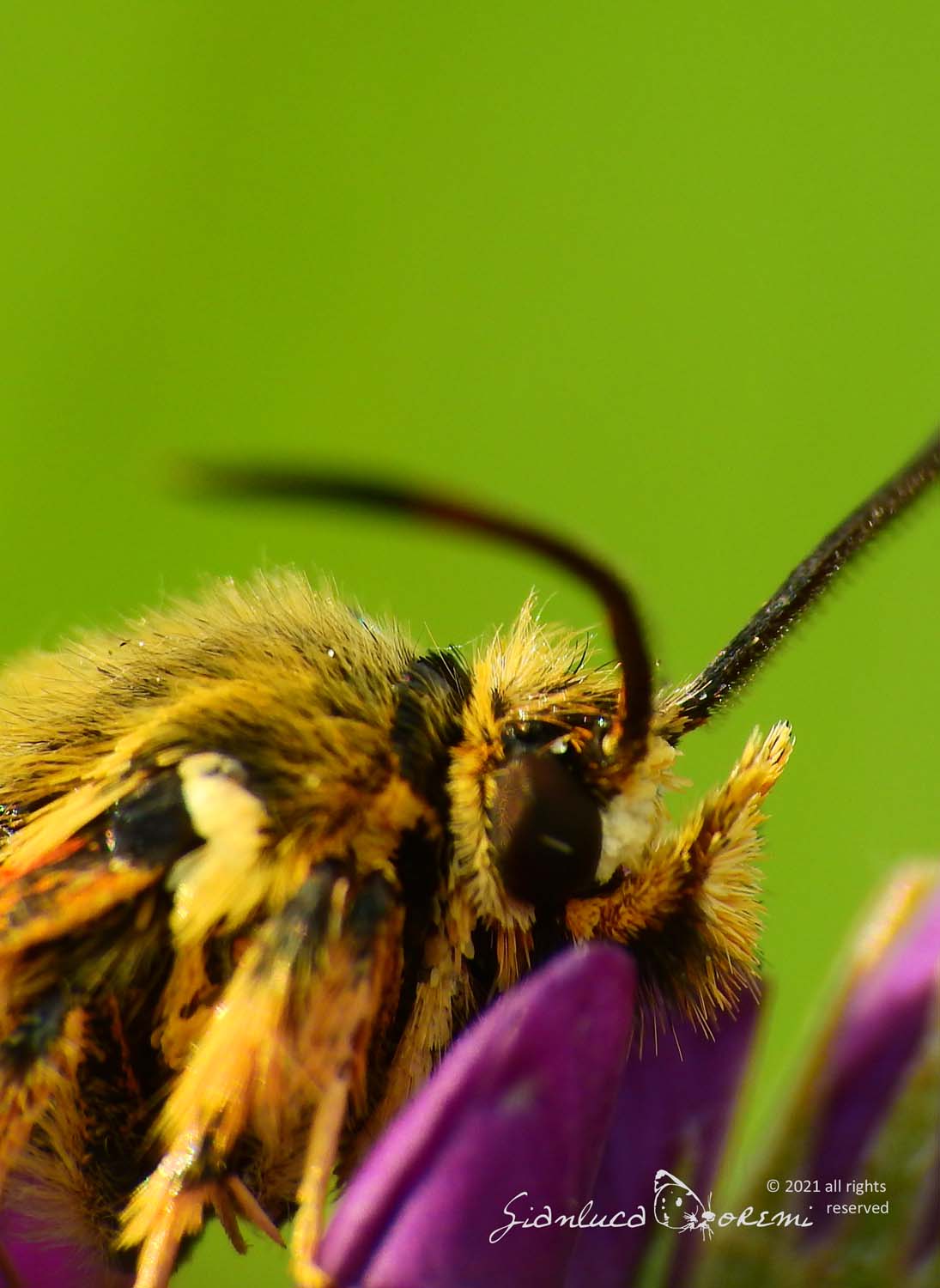
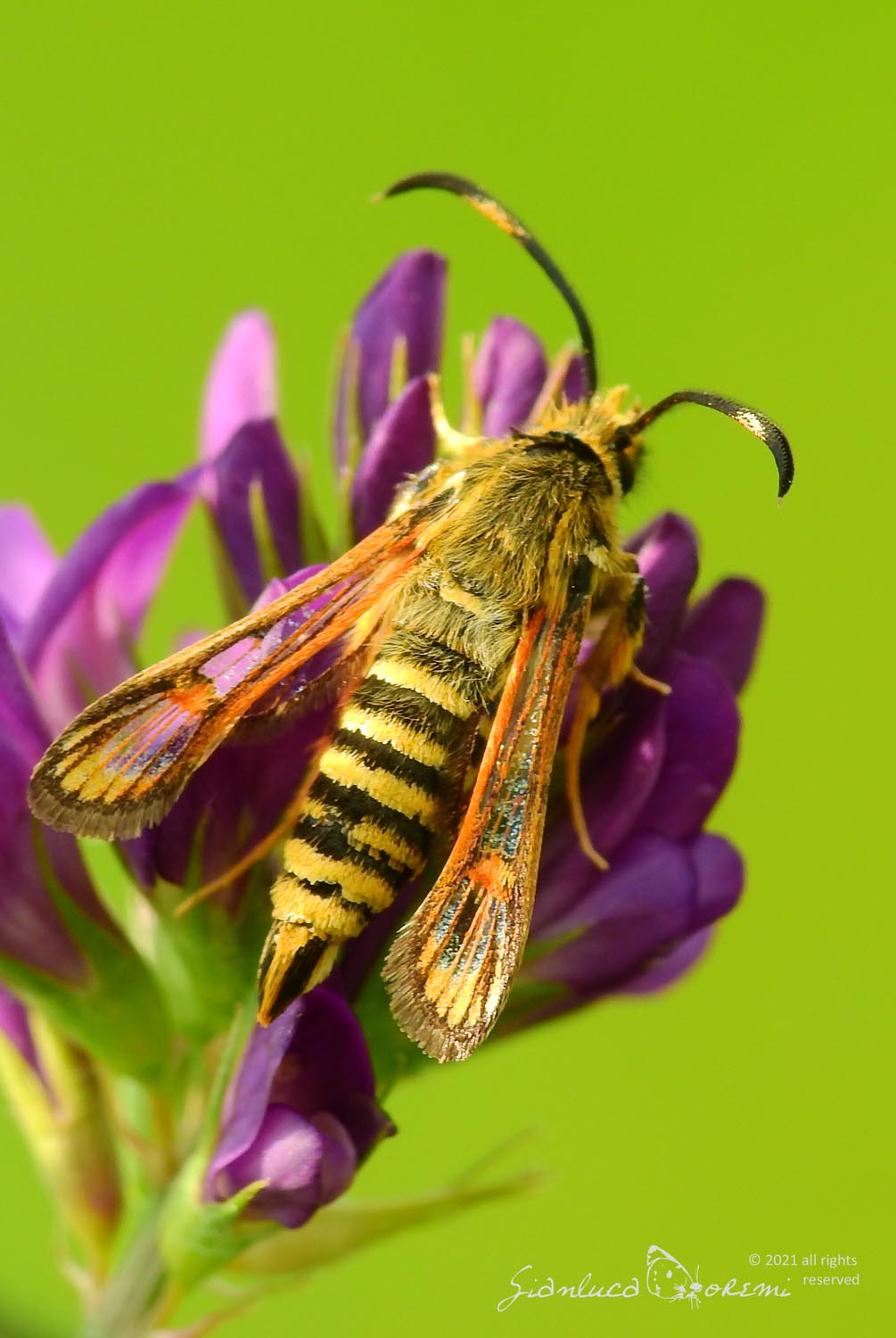
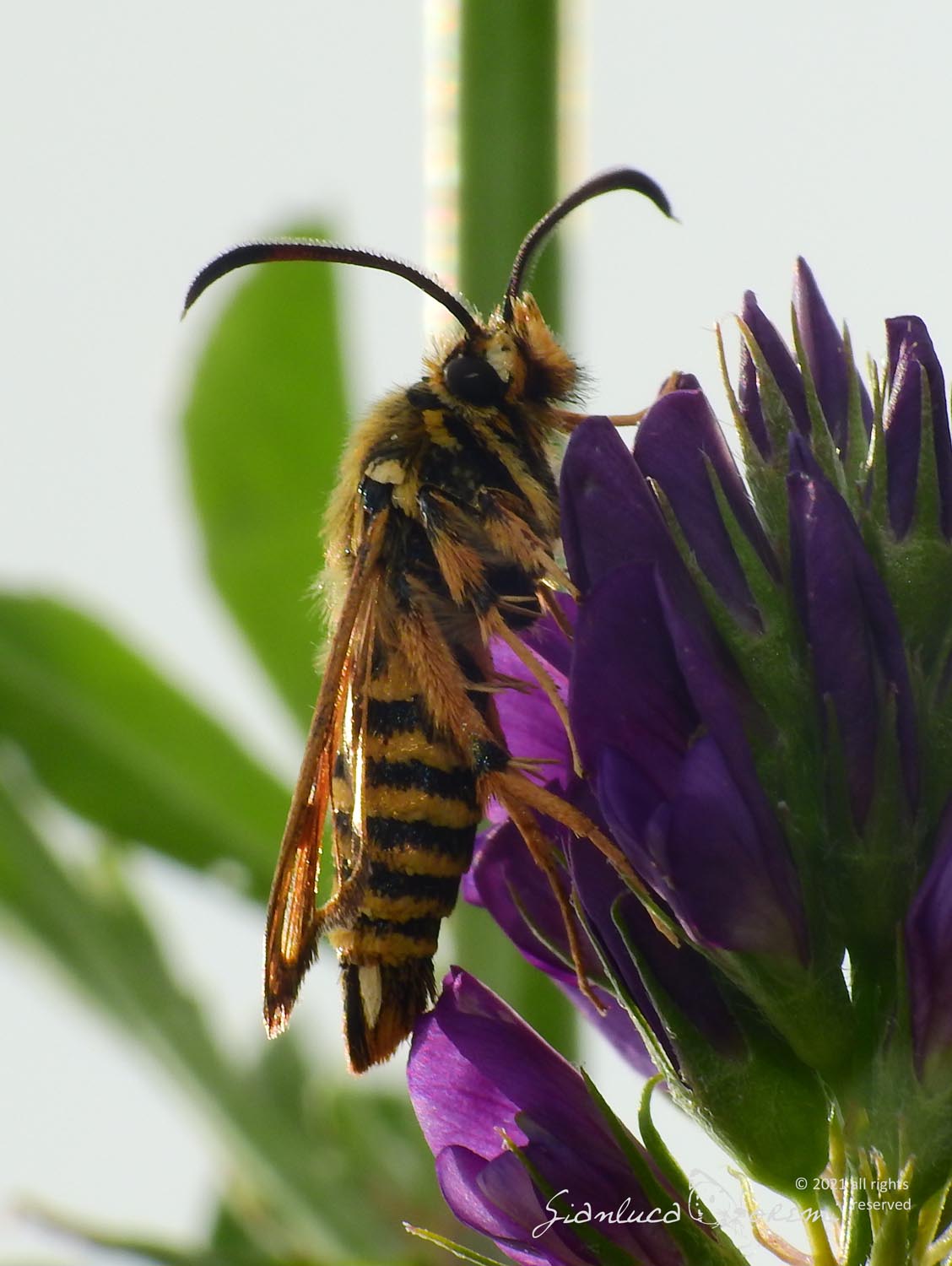

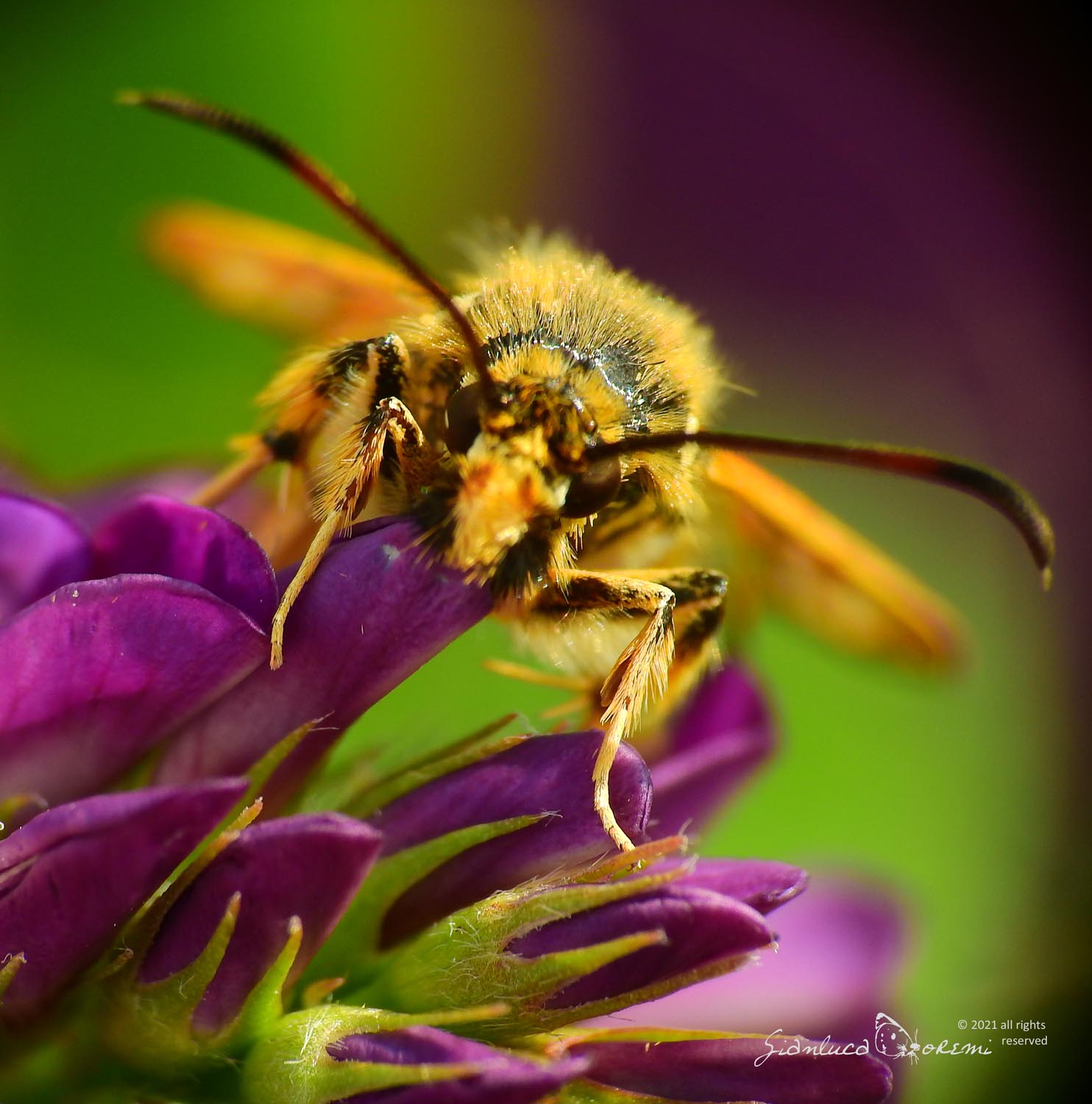
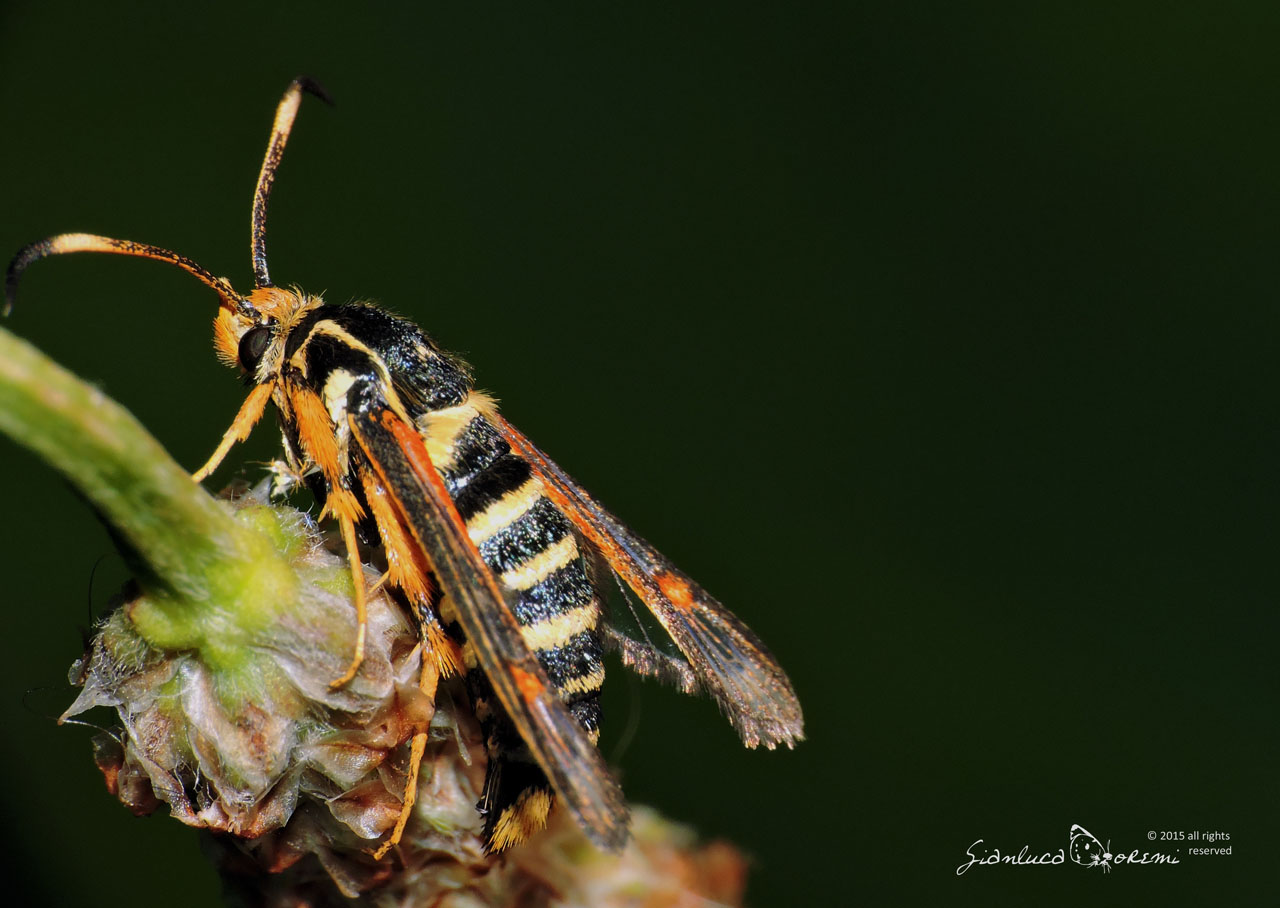

 EN
EN ITA
ITA
Social and publications